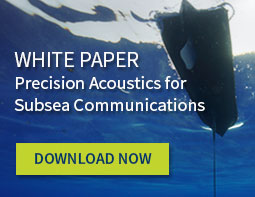An Admiral’s Perspective: Cost-Effective Monitoring of Australia’s Vast Ocean Territory
Liquid Robotics — September 25, 2017
If we don’t know the ocean, we can’t measure or predict its impact on our landmass and our future prosperity.
Australia has 25,000 km of coastline and 10,000 sq. km of marine territory to manage. How do you keep tabs on this vast area? Without spending a lot of money, you don’t. You can only risk manage. Even then, traditional surveillance systems used for monitoring high risk areas and activities are expensive to acquire, operate and maintain. The cost of monitoring oceanographic and weather conditions is somewhat less expensive but still limited by budgets and technology.
Until now that is.
Autonomous systems have come of age, and have proven to be reliable for long duration ocean observation and surveillance.
Across the spectrum of ocean activity that impacts Australia’s safety, security, climate, and economy, there is a role for unmanned systems.Long-duration ocean robots can greatly reduce the costs of surveillance by reducing the use of high cost manned systems or limited-duration unmanned systems for initial detection of surface and sub-surface illegal entry. They are also well suited to detect illegal fishing in remote areas, where conventional methods are risky and costly and of limited duration.
Australia Needs Wave Gliders
The game changer for autonomous ocean going surface systems is the Wave Glider.
With more than ten years and 1.4 million nautical miles of ocean-going experience, from the equator to the polar regions in all sea states including hurricane conditions, the Wave Glider has transformed how and where we gather ocean data, and how we process that data. The Wave Glider has spawned innovation though new payload applications that gather and report all manner of ocean activity, natural and man-made, in real time and at much less cost and risk than ever before.
Repetitive ocean monitoring tasks are a Wave Glider staple. Observing and reporting oceanographic conditions in real time to assist weather prediction and climate modelling is occurring in many countries. Similarly, security of offshore and sub-sea assets is made easier by the ability of a Wave Glider to patrol autonomously for extended periods. All done more cost-effectively than traditional observation methods.
And the list goes on. From saving taxpayers money for government managed activities such as border security and environmental monitoring, to improving the bottom line for commercial activities such as mining and fisheries, to facilitating scientific research, the Wave Glider will revolutionise Australia’s ability to monitor its vast ocean territories and increase the utility of other manned and unmanned ocean-going surveillance and monitoring systems.
Rear Admiral Boyd C. Robinson served 37 years in the Royal Australian Navy, and is a senior advisor to Liquid Robotics. Visit Boyd and other members of our team at PACIFIC 2017 in Stand 1J3.
